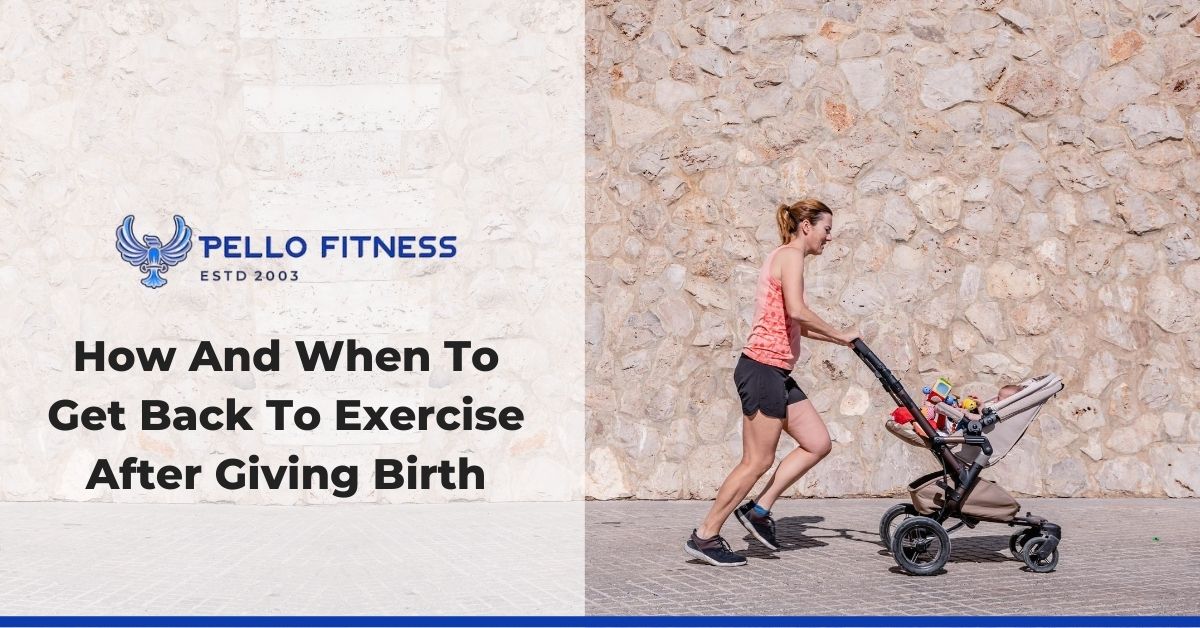|
For women who have given birth, they are always considered to be postpartum. Whether the delivery was 20 minutes ago or 20 years ago - concessions will have to be made and training modifications put in place. It's normal for new mothers' bodies to feel different and unfamiliar when compared with their bodies before pregnancy. The main changes seem to be focused across three main areas; the hips, the abs, and the pelvic floor. Each of these areas is related and connected to one another. Step 1. Your Pelvic Floor The pelvic floor muscles are responsible for supporting the bowel, bladder, and uterus. During pregnancy, the pelvic floor muscles help to support the baby and assist in the birth. Pregnancy and childbirth can cause the muscles in the pelvic floor to weaken, which can cause incontinence, uncontrollable passing of wind, and pain during sex. Performing pelvic floor exercises can help to strengthen these muscles and limit these consequences. One of the most popular and effective pelvic floor exercises is Kegels. It involves contracting the muscles in the pelvic floor like you were trying to stop urination while you'd already begun. Performing 5 second Kegel holds can help to strengthen the pelvic floor muscles. It's recommended you complete 10 reps, 3 times a day. Step 2. Get Clearance A standard guideline is to start slowly, with a 6 weeks after a vaginal birth and 8 weeks if you've had a C-section with no complications. However, research from The American College of Obstetricians and Gynecologists suggests that this might happen much more quickly than once thought. Provided you were active throughout pregnancy and had an uncomplicated birth, you might begin working out as soon as a few days after giving birth - provided you're in no pain. If the birth was more complicated, such as a C-section or a recovery, be sure to talk to your doctor about when you can safely start a fitness program. Step 3. Manage Expectations Even if you're ready to get started soon after birth, take it gently. Start slowly with low-impact exercises such as walking, gentle stretching, and bodyweight exercises to test everything still works as it should. Then you can progress onto weight training with light weights or bands for an added challenge when your body is ready. High-intensity workouts can do a lot more harm than good to a postpartum body, so I would advise you to resume them later. Those high-intensity workouts will still be there when you've recovered. Maintain your focus on choosing exercises that you enjoy. Step 4. What To Work On Once you decide you're ready to start exercising, you will likely want to focus first on your stamina. This might include muscular endurance, such as Kegels and other pelvic floor exercises, or aerobic endurance, like walking or aerobics. The research suggests that the benefits of these types of workouts are numerous. They can strengthen and tone abdominal muscles, boost energy, alleviate postpartum depression, promote better sleep, and ease some of the stress of looking after a newborn. If you decide that this is the right time for you to begin a return to fitness, you might consider:
Step 5. Get Support Giving birth is an intense emotional and physical experience - even if the delivery was straightforward, and there were no complications. If you were training before giving birth, you might need to adjust the intensity of exercise you are used to and gradually build back up. Sticking with low-intensity steady-state is excellent too if you are happy there, though. If you choose to work with a professional initially - either one to one or in a group fitness class - make sure your instructor knows that you've given birth. This will affect what exercises they ask you to do. It's also worth checking that they have the skills and qualifications to train postpartum mums. That will ensure you are in good hands. Many gyms offer parent and baby classes, some gentle yoga, or water aerobics could all be good options for group fitness classes. If you're working one-to-one with a personal trainer, look for knowledgeable, certified, and experienced professionals. Step 6. Be PatientThroughout your return to exercise, listen to your body. Immediately after giving birth, your body has been injured. Approaching your training like rehab could be a sensible first step. Permit yourself to go at your own pace, scale movements where necessary, and take extra time to recover from workouts.
If you're a new mom and are interested in joining a community of supportive women, check out our Facebook community. If you prefer to have a chat 1-2-1 about your return to fitness, feel free to contact us.
1 Comment
|
AuthorZach Pello Archives
June 2023
Categories |
Services |
Company |
|
|
© COPYRIGHT 2018. ALL RIGHTS RESERVED.
|
Website Design by My Personal Trainer Website
|


 RSS Feed
RSS Feed